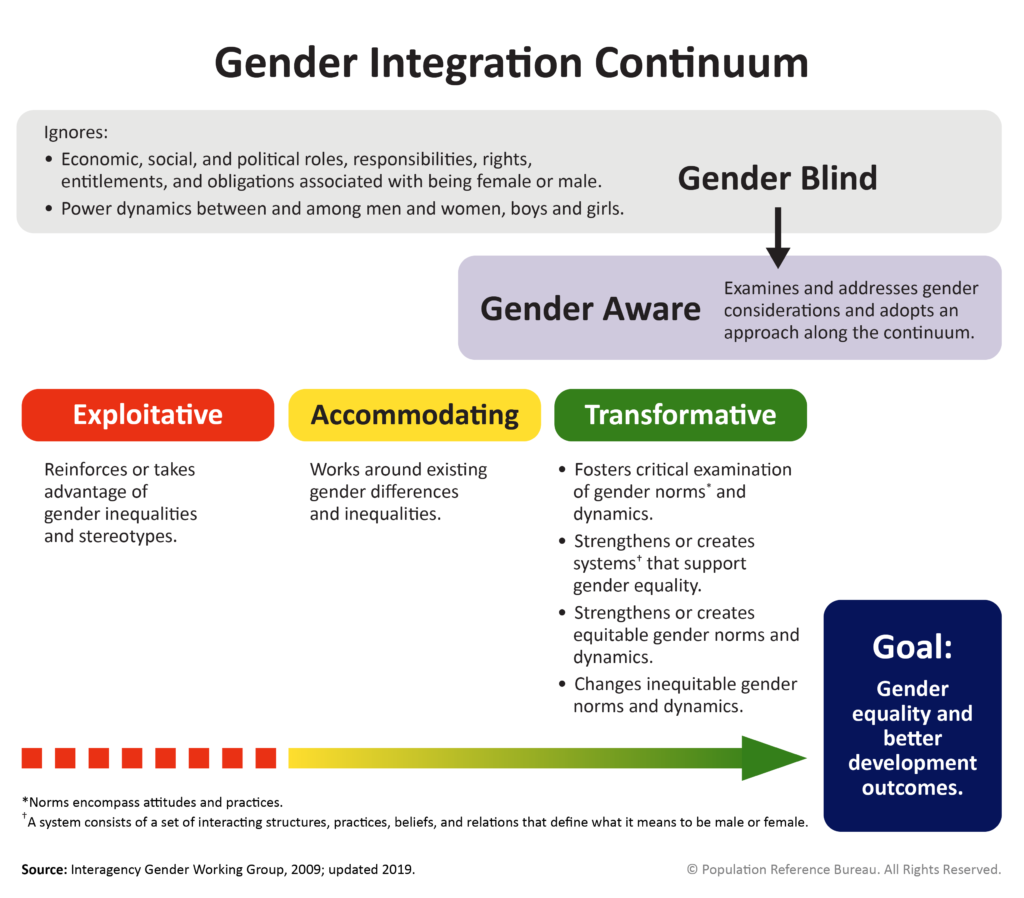Resources
Our training materials can be used to introduce a broad range of audiences and backgrounds to important concepts related to gender and health. Each training course focuses on one of five themes that complement the CORE Gender 101 agenda: Gender Integration, HIV + Sexuality, Safe Motherhood, Gender-Based Violence, and Constructive Male Engagement. The courses are designed to meet the geographic and technical needs of cooperating agencies, USAID Missions, and specific projects. Materials range from basics such as using a shared gender vocabulary and programmatic guidance, to user guides on how to conduct a gender analysis, to exercises for gender trainings. The trainings are geared to be used by anyone and with any audience, even those learning about gender for the first time!
Our popular Gender Integration Continuum framework is an important tool to assess how programs do (or do not) address gender and move them toward more gender-transformative actions. An updated User’s Guide for facilitating training on use of the continuum is available, along with other materials.
Men. Men. Men. The Podcast
Father Engagement Amidst the COVID-19 Pandemic: Challenges, Promising Approaches, and Opportunities: Post-Webinar Recording
DO’s & DON’Ts for Engaging Men & Boys: Available in Arabic, English, French, Kiswahili, Portuguese, and Spanish
Supporting Best Practices: Guidelines for Funding Programs That Engage and Mobilize Men and Boys in Violence Prevention
In collaboration with ACWS and the Government of Alberta, Shift created a practical set of guidelines to support funders and policymakers investing in programs that engage and mobilize men and boys in preventing violence against women and advancing gender justice. The guidelines aim to inform funding decisions and help advance effective practices in engaging and mobilizing men and boys in violence prevention.
Gender, Power, and Violence: Measures and Their Association with Male Perpetration of IPV
Harmful gender norms, views on the acceptability of violence against women, and power inequities in relationships have been explored as key drivers of male perpetration of IPV. Yet such antecedents have been inconsistently measured in the empirical literature. This journal article aims to identify which measures of gender inequitable norms, views, relations, and practices are currently used in the field and which are most closely...


